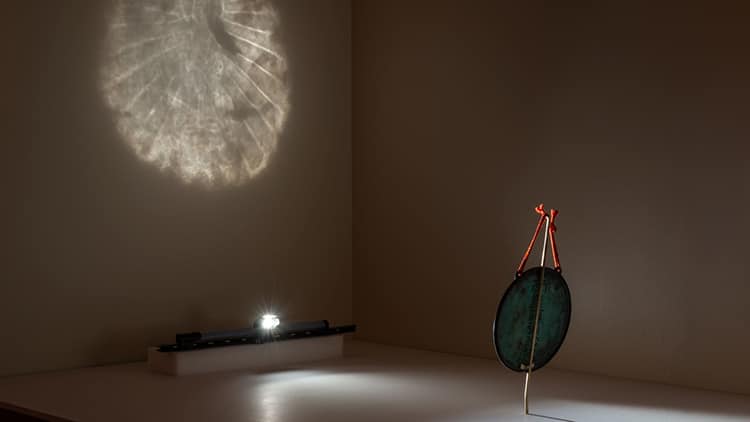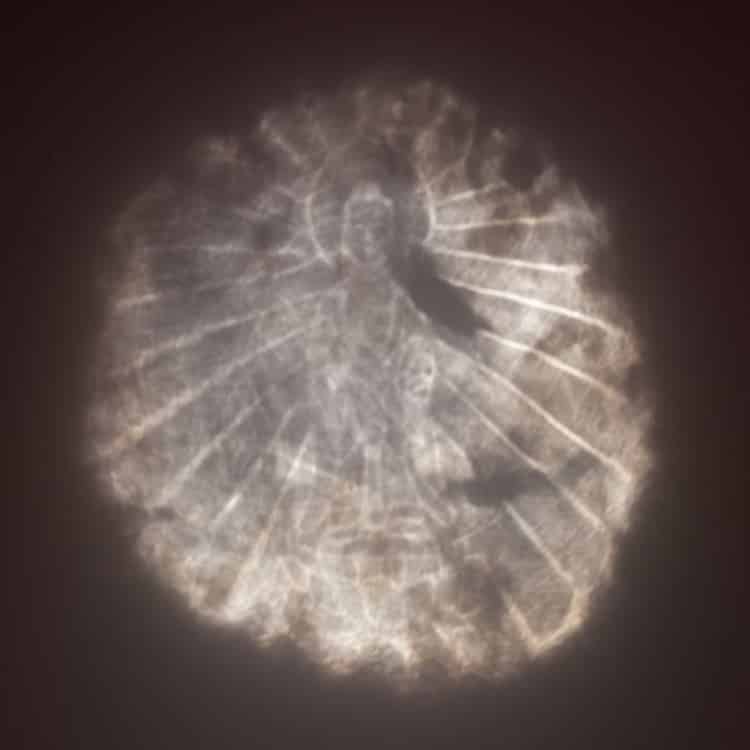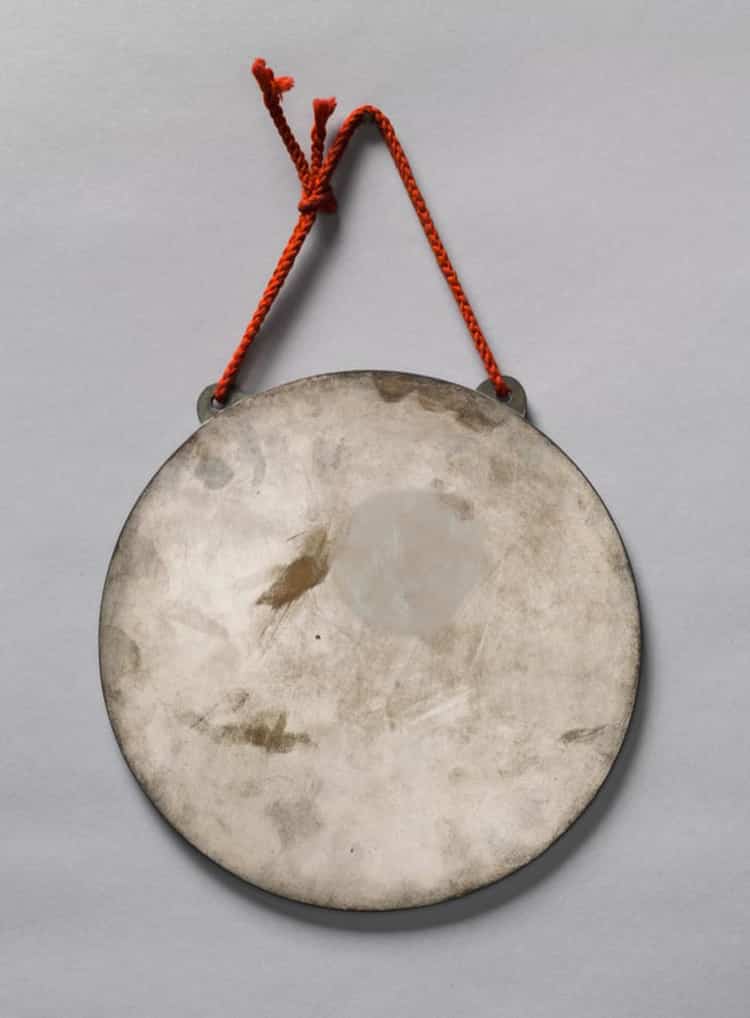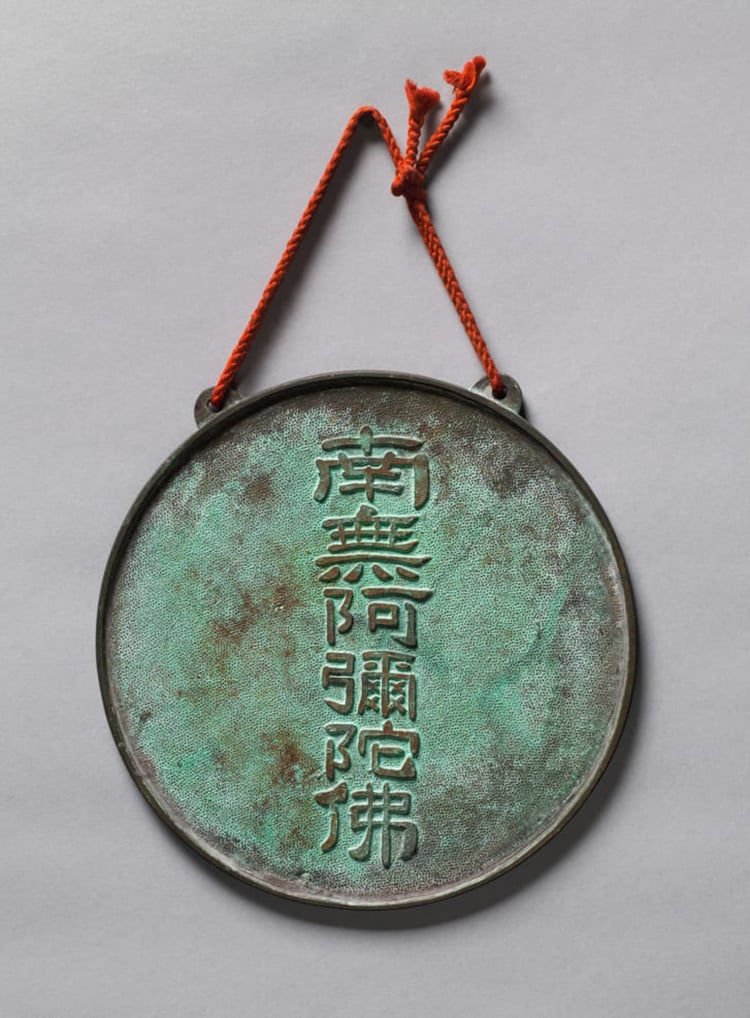
The mirror reflecting its hidden image. (Photo: Rob Deslongchamps/Cincinnati Art Museum)
Mirror, mirror, on the wall, what’s the greatest surprise of them all? For researchers at the Cincinnati Art Museum, the shock of discovering a “magic mirror” within the museum’s holdings was a once-in-a-lifetime discovery. The antique mirror is crafted from elegant bronze, shined to reflective perfection. For most of its over 50 years in the collections, the mirror was largely considered unexceptional. However, when a light is shone on the reflective face, its subtle planes project an illumination in the shape of a magnificent Buddha.
In the spring of 2021, the Cincinnati Art Museum’s Curator of East Asian Art, Dr. Hou-mei Sung, set about researching rare “magic mirrors.” The earliest examples date back to China’s Han dynasty (202 BCE–220 CE). Other examples of these extraordinary mirrors were crafted in the Edo period of Japan. To Dr. Sung, these Edo examples looked like an item that had been languishing in the museum’s collections since its last exhibition in 2017. The Cincinnati mirror was older, dating to the 15th or 16th century. It shared a similar design with the Edo examples but was smaller and had a more complex Chinese script.
In the storage room of the museum, Dr. Sung asked a conservation expert to shine a light on the mirror. The conservator used her phone flashlight and directed the beam at the shiny surface. On the dark wall across from the mirror, a majestic image of the Buddha at the center of a “starburst” pattern appeared. “We were so excited,” Dr. Sung said. “This is a national treasure for China, and we are so lucky to have rediscovered this rare object and have it on view in Cincinnati,” she added in a statement. Only three other rare Buddhist-themed ones are known, including one in the Metropolitan Museum of Art in New York City.
To create the mirror, artisans likely cast the desired image in raised bronze on one side of a medallion. They then slowly smoothed down the metal on the other side and polished it to a reflective sheen. The mirror’s varying thickness would then subtly mimic the image in curvature on the reflective side. That side was then covered in a mercury-based coating which subtly added further definition to the image. In the case of the Cincinnati Art Museum artifact, another bronze plate embossed with Chinese characters was added to the mirror to cover the originally cast image. The result is a reflective mirror with only the subtlest variations which, when lit, reflect a pattern.
The exact craftsmanship of the mirrors is still somewhat mysterious to scholars, but the fascination with these “transparent” mirrors (as they are known in Chinese) is enduring; they are extremely rare and very beautiful. “No matter how much you can explain theoretically, it all depends on the master who polishes the surface which is tremendously difficult,” Dr. Sung explained. “That’s why they are so rare.” However, she believes more mirrors may be out there, just waiting for someone to shine a light on them.
Researchers discover a small, bronze Japanese “magic mirror” in the collections of the Cincinnati Art Museum.

The hidden image. (Photo: Rob Deslongchamps/Cincinnati Art Museum)
The glass is subtly sculpted to reflect an image of the Buddha.

The face of the mirror. (Photo: Rob Deslongchamps/Cincinnati Art Museum)
The rare mirror was crafted in the 15th or 16th century in Japan.

The bronze back of the mirror. (Photo: Rob Deslongchamps/Cincinnati Art Museum)
h/t: [CNN]
Related Articles:
The Unique History and Fascinating Evolution of the Japanese Kimono
10 Facts About Utagawa Hiroshige: The Last Great Master of Japanese Woodblock Printing
Download 1,000+ Japanese Woodblock Prints by Edo-Era Master Hiroshige
How Japanese Art Influenced and Inspired European Impressionist Artists
